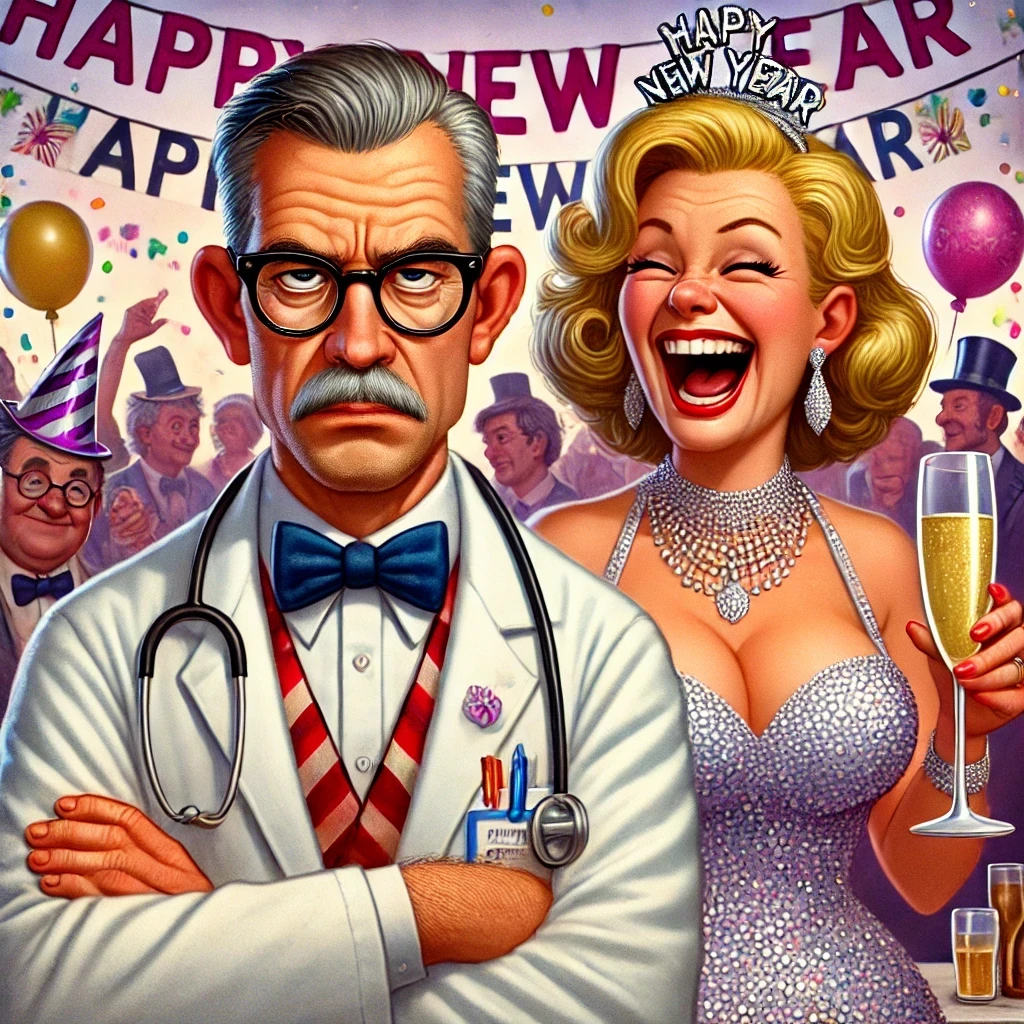Today citizens get their news from a kaleidoscope of sources, some reliable many not—and we’re pretty sure it’s the other guy, not us, who is being taken in by partisan propaganda and fake news.
Madeleine Albright, Fascism: A Warning

Today citizens get their news from a kaleidoscope of sources, some reliable many not—and we’re pretty sure it’s the other guy, not us, who is being taken in by partisan propaganda and fake news.
Madeleine Albright, Fascism: A Warning

How Governments and Organizations Influence History
The reshaping of societal memories by governments and powerful organizations is a complex, often subtle process driven by political, cultural, or economic goals. At its core, it involves shaping collective memory—the shared pool of knowledge and information within a society—so that certain narratives or interpretations of events are emphasized, while others are diminished or erased altogether. This process can occur overtly through official policies, education, or media, or covertly through subtle shifts in cultural emphasis. This post explores historical precedents, modern examples, the methods employed, the role of large organizations, and the ethical implications of manipulating collective memory.
Historical Precedents and Modern Examples
Governments have long engaged in the manipulation of collective memory, and history is filled with examples of this practice. In the Soviet Union, leaders who fell out of favor were frequently “erased” from photographs, history books, and public memory—a practice similar to the ancient concept of damnatio memoriae, the Roman practice of condemning those deemed enemies of the state by erasing their existence from public records. Similarly, in the aftermath of revolutions, new governments often attempt to rewrite history to legitimize their rule and justify their actions. Monuments, statues, and even place names can be altered or destroyed to erase the memory of a prior regime and reimagine the past in ways that support the new political narrative.
In more recent times, authoritarian regimes have used similar tactics, from China’s control of information surrounding the Tiananmen Square protests to North Korea’s highly curated historical narrative that glorifies its leaders. Even in democratic societies, where manipulation of collective memory is often less overt, there are still examples of governments attempting to control public discourse and memory.
Methods of Restructuring Collective Memory
The restructuring of collective memory can occur in a variety of ways, ranging from subtle shifts in emphasis to overt censorship:
Role of Large Organizations
While governments are often the primary actors in reshaping societal memories, large organizations such as multinational corporations, international Non-Governmental Organizations (NGOs), and global media companies also play a significant role. Corporations often use “corporate social responsibility” (CSR) initiatives to align their brands with social movements or values, subtly shaping public perceptions of historical and current events.
Media conglomerates, by controlling vast networks of information dissemination, influence which stories are told, retold, or forgotten. Social media platforms, through their algorithms and content moderation policies, significantly influence collective memory by determining which narratives remain visible and which fade into obscurity. As a result, collective memory becomes fragmented, influenced as much by corporate interests and technological algorithms as by government policies.
Ethical Concerns and the Struggle for Truth
The ethical implications of reshaping societal memories are vast. While some argue that reshaping collective memory is necessary for social progress, particularly when it comes to rectifying historical injustices or fostering reconciliation, others view it as a dangerous form of manipulation that can obscure truth and stifle dissent.
This tension reflects a broader debate about the nature of memory and history itself. Is there an objective “true” version of history, or is all history inherently subject to reinterpretation as societal values and perspectives evolve? This ongoing tension between interpretation and truth underscores the need for a careful and inclusive approach to shaping collective memory, with a responsibility to ensure that the process remains open, inclusive, and truthful, rather than driven solely by those in power.
Conclusion
Restructuring societal memories is a powerful tool that governments and large organizations can use to influence culture, politics, and identity. The methods they use, whether through education, media, censorship, or public symbols, can have profound impacts on how societies understand their past and imagine their future. While some reshaping of collective memory is inevitable, it is essential to approach this process with caution, prioritizing the public interest over the narrow objectives of the powerful. With the rise of digital platforms and globalized media, the struggle for control over collective memory is more relevant than ever, raising important ethical questions about who gets to shape the stories we live by.
Further Reading
For further reading, see: Items: Insights from the Social Sciences.
The Oxford Handbook of Contextual Political Analysis, https://academic.oup.com/edited-volume/34357

What Everyone Should Know
High blood pressure (hypertension) is a common but frequently unrecognized condition that affects millions of people worldwide. Often referred to as the “silent killer,” it rarely shows symptoms until significant damage has been done to vital organs like the heart, kidneys, or brain. We are going to explore the importance of blood pressure control, goals, comorbid conditions that increase risk, and the dangers of leaving hypertension unchecked.
What is Blood Pressure?
Blood pressure measures the force exerted by circulating blood on the walls of the body’s arteries. It is recorded with two numbers:
Blood Pressure Goals
Some practitioners use 130 / 80 as a blood pressure goal because they feel it is more attainable and manageable than 120 / 80.
Seniors and Blood Pressure
Blood pressure guidelines for seniors have been evolving. In the past, recommendations were higher with 140 / 90 recommended for most older adults and recommendations for those aged 60 and over as high as 150 / 90. At that time, it was felt that lower blood pressure thresholds for older adults may lead to increased dizziness, falls or other complications. Several recent studies of hypertension show that more intensive blood pressure control in older adults reduces the risk of cardiovascular events and mortality with few significant side effects when compared to previous recommendations.
Comorbid Conditions
Specific blood pressure goals may vary among organizations and professional groups. It is essential to individualize treatment based on factors like overall health, risk of side effects, and tolerance to medications. Always consult your healthcare provider to determine the most appropriate blood pressure target and management plan for you.
Risk of Uncontrolled Blood Pressure
Uncontrolled hypertension can lead to devastating health consequences, especially over time. Below are some of the most significant risks:
Why You Might Not Know You Have High Blood Pressure
One of the most dangerous aspects of hypertension is that it often presents with no symptoms. Many people can live with elevated blood pressure for years without feeling any different, which is why regular monitoring is crucial.
Common reasons why a person may not realize they have hypertension include:
The Importance of Regular Monitoring
Given that high blood pressure is often symptomless, regular blood pressure screenings are essential. Your doctor can determine your risk factors based on age, family history, and lifestyle. Home blood pressure monitors are also widely available and can help you track your numbers between doctor’s visits.
For those with a family history of hypertension or conditions like diabetes, it’s critical to be proactive in getting your blood pressure checked.
Conclusion
While high blood pressure may not make you feel sick, it’s a condition that requires attention. Managing your blood pressure according to your overall health and any comorbid conditions can dramatically reduce your risk of heart attack, stroke, and other life-threatening complications. Regular monitoring, lifestyle modifications, and working closely with your healthcare provider can help ensure that your blood pressure stays within a healthy range.
Make an appointment today to have your blood pressure checked, especially if it’s been a while since your last screening. Remember, you won’t know unless you check!


If you must. -The Grumpy Doc

Part II
Introduction
In Part 1 of a Path to Recovery I recommended that the Democrats return to the grassroots level. I believe that they should focus on state and local races and refine a message that appeals to the general population. They’ve been unsuccessful in their top-down approach. Let’s take a look at where they could go from there.
Acknowledge the Need for Change
The first step toward recovery is an honest assessment of what went wrong. Ignoring electoral losses or solely blaming external factors without self-reflection is a common pitfall. I already see some of this finger pointing and blame deflection going on as I read about various Democrats’ responses to the election. For example, Sheila Nix, Vice President Kamala Harris’ chief of staff, stated during a summit at Harvard University that Harris ran a “pretty flawless campaign”. If it had been flawless, she would have won.
After their 2012 election loss, the Republican Party conducted a comprehensive analysis, resulting in the “Growth and Opportunity Project” report. This internal review highlighted areas for improvement, including outreach to minority communities and the need for a clearer economic message.
For Democrats, a similar post-mortem analysis could prove invaluable. By examining voter data, exit polls, and demographic shifts, the party can identify why key groups, such as working-class voters, Latinos, young men, and suburbanites, may have turned away. Addressing these issues directly and transparently can rebuild trust and demonstrate the party’s seriousness about listening to voters’ concerns.
Beyond incremental reforms, Democrats must embrace bold, transformative policies that resonate with voters who feel left behind by the current system. The party needs to develop a compelling identity focused on concrete, tangible improvements in people’s lives rather than abstract ideals.
Reevaluate Economic Messaging and Focus on the Working Class
Economic anxiety remains a powerful driver of voter behavior. While Democrats have traditionally been seen as the party of the working class, recent elections reveal erosion in this support, particularly among white, non-college-educated voters. In 2024, exit polls indicated that economic issues, such as inflation and job security, were top concerns for many voters.
To reconnect, Democrats need to sharpen their economic message. A strong focus on job creation, wage growth, and small business support can resonate with those alienated by a perceived focus on identity politics. Franklin D. Roosevelt’s New Deal is a historical example of pivoting toward a broad, economically focused coalition. A modern equivalent could involve targeted investments in infrastructure, clean energy jobs, family farm support, and small business relief.
Bridge the Urban-Rural Divide
One significant challenge for Democrats is the growing urban-rural divide. While the party finds success in urban areas, it struggles to maintain support in rural and suburban communities. In states like Ohio and Pennsylvania, losses in rural counties often outweigh gains in urban centers, tipping closely contested races.
Reaching rural voters requires more than policy proposals; it demands a cultural shift in communication. Democrats could emphasize issues directly impacting these communities, such as healthcare access, rural broadband expansion, job protection and development, and agricultural support. Joe Biden’s modest gains among rural voters in 2020 suggest that sustained effort could lead to further inroads.
Rebuild the Coalition and Energize Young and Minority Voters
The Democratic Party’s success has historically hinged on its ability to build a diverse coalition of young voters, minorities, women, and progressives. However, recent trends indicate waning enthusiasm among these groups, particularly younger voters disillusioned with incremental policy changes and the slow pace of progress on climate change and student debt relief. There is also significant concern about job availability and long-term financial stability among young voters.
Mobilizing less-engaged voters, especially in non-presidential election years, is crucial. Grassroots organizing, like Barack Obama’s 2008 campaign strategy, could prove effective. Meeting voters where they are, both online and in their communities, and addressing their key concerns can reinvigorate this coalition. In the recent presidential election, the Republicans made a focused effort on less-engaged voters. This was particularly effective in Arizona where it may have made the difference in shifting the state to Donald Trump.
Simplify the Policy Agenda and Focus on Clear, Unifying Issues
A common criticism of Democratic campaigns is that their platform can appear fragmented, with overwhelming attention to niche issues. Democrats should consider rallying around a few key issues with broad appeal, such as healthcare reform, economic fairness, job creation, and climate action.
Bill Clinton’s 1992 campaign slogan, “It’s the economy, stupid,” streamlined messaging and maintained focus on voters’ primary concerns. This year the Republicans were successful with a variation of this message.
Democrats today might focus on reducing prescription drug costs, enhancing mental health services, and promoting job-centered climate policy to unite progressive and moderate wings.
Invest in Digital Strategy and Combat Misinformation
The shift to digital campaigning has fundamentally changed electoral dynamics. While Democrats historically led in digital strategy, Republicans have closed the gap, excelling in targeted ads and social media engagement. In fact, during the last election the Republicans generally ignored traditional media going directly to social media where they could spread their message without critical evaluation or fact-checking.
To regain their edge, Democrats need to invest in data analytics, targeted outreach, and robust real time fact-checking to combat misinformation. They must have a group dedicated to continuously monitor and respond to social media campaigns. A strong digital presence can engage younger, tech-savvy voters with clear messaging that rapidly counters disinformation.
Conclusion: A Resilient Path Forward
Recovering from electoral defeat requires adapting, evolving, and embracing change. Continuing to attempt to respond to every special interest group will continue to alienate a majority of voters. This is not something many progressive Democrats want to consider. However, by focusing on economic issues, bridging cultural divides, re-energizing their traditional coalition, and investing in grassroots and state-level efforts, Democrats can lay the groundwork for future success.
History shows that political parties rebound when they listen to voters and refine their strategies. The road ahead will be challenging; the Democratic Party has been trapped in an echo chamber of progressive demands.
By developing a clear vision and a commitment to addressing a diverse electorate’s needs, the Democratic Party can reposition itself as a champion of the people. The key will be finding a balance between the aspirations of its current base and the practical concerns of everyday Americans who once were its base.

The History of New Year’s Resolutions
New Year’s resolutions—a practice where individuals set goals or make promises to improve their lives in the upcoming year—have a rich and varied history spanning thousands of years. While the concept of self-improvement at the start of a new year feels modern, its origins are deeply rooted in ancient civilizations and religious traditions.
Origins of New Year’s Resolutions
The tradition of making promises at the start of a new year can be traced back over 4,000 years to the Babylonians. During their 12-day festival, Akitu, held in mid-March to coincide with the spring harvest, they made vows to their gods to repay debts and return borrowed items. Success in fulfilling these promises was believed to curry favor with the deities.
When Julius Caesar reformed the Roman calendar and established January 1 as the start of the new year, the practice took on a more formal tone. January was named after Janus, the two-faced Roman god of beginnings and endings. Romans offered sacrifices to Janus and made promises of good behavior for the coming year, reflecting on the past and looking forward to the future.
By the Middle Ages, the focus shifted to religious observances. In early Christianity, the first day of the year was often a time of prayer, reflection, and making pious resolutions. One of the most interesting New Year’s traditions was the “Peacock Vow”. Christian Knights would reaffirm their commitment to chivalry at the end of the Christmas season and vow good behavior and chivalric deeds during the coming year. The vow was taken while eating roast Peacock at a New Year’s celebration.
In the 17th century, Puritans made revolutions that focused on spiritual and moral improvement. Common resolutions included commitments to avoid pride and vanity, practice charity and liberality, refrain from revenge, control anger, speak no evil of others, and live a life aligned with religious principles. They also resolved to study scriptures diligently, improve religious devotion weekly and renewed their dedication to God.
In 1740, John Wesley, founder of Methodism, created the Covenant Renewal Service, held on New Year’s Eve or Day. These gatherings encouraged reflection on the past year and resolutions for spiritual growth.
The first known use of the phrase “New Year’s Resolution” was in a Boston newspaper, Walker’s Hibernian Magazine, in 1813. The article humorously discussed people breaking their New Year’s vows almost as soon as they made them. It would appear nothing much has changed over the last 221 years.
The Modern Evolution of New Year’s Resolutions
The secularization of New Year’s resolutions began in the 19th and 20th centuries, with self-improvement and personal growth taking precedence over religious vows. The rise of print media helped popularize the practice, with newspapers and magazines publishing advice on how to set and achieve goals. By the 21st century, resolutions were firmly embedded in Western culture as a tradition of hope and renewal.
Common New Year’s Resolutions
Resolutions tend to reflect cultural priorities and individual aspirations. A survey of common resolutions reveals recurring themes:
Health and Fitness:
Personal Development:
Financial Goals:
Relationships and Community:
Breaking Bad Habits:
The Success Rate of Resolutions
Despite their popularity, New Year’s resolutions are notoriously hard to keep. Studies estimate that about 80% of resolutions fail by February, often due to overly ambitious goals or lack of specific planning. However, setting realistic, measurable, and time-bound goals (e.g., SMART goals) can improve success rates. It seems that most people approach their New Year’s resolutions more for fun than with any anticipation that they will be kept.
The Significance of Resolutions Today
New Year’s resolutions persist because they align with a universal desire for self-improvement and fresh starts. Whether rooted in ancient traditions or modern goal-setting frameworks, they represent a belief in the potential for change, even if it takes a bit of effort to achieve.
My personal New Year’s resolution is to increase The Grumpy Doc’s subscribers to 50. Then I’ll only need 9950 more to be able to attract advertisers. $$$$$

Sources:

A Blueprint for Better Government or a Road Map to Authoritarian Rule?
Introduction
During the recently concluded presidential campaign, we heard much about the Heritage Foundation’s Project 2025. It was generally discussed as a plan for a conservative restructuring of the government. Donald Trump has repeatedly stated that he knows nothing about the plan or its contents. Given his general lack of interest in policy details during his previous administration, I believe him.
I didn’t know much about it either. In what I now recognize as magical thinking on my part, I assumed there was no way the American people would return him to office, so I didn’t bother learning about it.
The day after the election, I went online to find a copy of the Project 2025 report. I started with the Heritage Foundation’s website, where they described different elements of the plan, but there was no way to order a copy. I checked other online sources, including Amazon, but still could not find the full report. I did discover that it is nearly 900 pages long, so even if I had obtained a copy, I doubt I would have read more than a small portion of it. Ultimately, I decided to purchase two summaries of the project, both claiming to be bipartisan. I believe they are generally balanced, as they present both positive and negative aspects of the program.
What is Project 2025?
The Heritage Foundation describes Project 2025 as a comprehensive initiative aimed at preparing for a conservative presidential administration beginning in January 2025. It is notable that the plan does not explicitly reference a Trump administration, but rather a generic “conservative” one. My interpretation is that this allows the Heritage Foundation to appear supportive of conservatism without explicitly endorsing Donald Trump, protecting their nonprofit status.
The project is structured around four key pillars:
At first glance, this seems straightforward and unalarming. However, delving into the details reveals a much broader scope. The plan includes discussions about eliminating certain government agencies, overhauling civil service, extending presidential control over independent agencies, and substantially revising (though not eliminating) the Affordable Care Act.
I believe that the ultimate intent of the plan is to fully implement the Unitary Executive Theory. Therefore, understanding Project 2025 requires a basic understanding of this theory.
Unitary Executive Theory
The Unitary Executive Theory is a legal and constitutional doctrine asserting that the President of the United States holds absolute control over the executive branch. Proponents argue that Article II of the Constitution, which vests “the executive power” solely in the President, provides a constitutional basis for this authority. Critics contend it undermines checks and balances and concentrates too much power in the executive.
Key Points of the Theory:
While proponents emphasize the need for a strong, centralized executive, critics warn it could erode the system of checks and balances envisioned by the framers of the Constitution.
Historical Perspective
The roots of the Unitary Executive Theory trace back to debates about the Constitution’s structure of executive power, particularly interpretations of Article II. Key historical examples include:
The term Unitary Executive Theory gained prominence in the late 20th century, championed by conservative legal scholars and the Federalist Society.
Application to Project 2025
Project 2025 seeks to leverage the Unitary Executive Theory to expand presidential power through the following measures:
Concerns Raised by Critics:
Supporters argue these changes are necessary to combat entrenched bureaucracy and improve efficiency. Critics, however, warn that this could push the U.S. toward authoritarian governance.
Conclusion
I have only touched on a few elements of Project 2025. Other aspects, such as policies on immigration, reproductive rights, and protections for minorities, are also deeply concerning but beyond the scope of this discussion.
Even just within the framework of the Unitary Executive Theory, I see significant risks. Will this plan lead to better government or pave the way to authoritarianism?
While everyone will reach their own conclusions, I find myself deeply distressed by the implications. I am concerned that the restructuring of DOJ, DHS and the FBI may lead to creation of a “Department of Political Vengeance”.
If you share these concerns, I recommend reading my post from September 8th, which reviews On Tyranny: Twenty Lessons from the Twentieth Century by Timothy Snyder.


As we age, maintaining good health becomes increasingly important to ensure a high quality of life. While everyone’s health needs are unique, there are universal strategies that can help seniors stay fit, independent, and active. Below are ten key health tips tailored for senior citizens, designed to promote both physical and mental well-being.
1. Stay Physically Active
Regular physical activity is one of the most important ways to maintain overall health as you age. Exercise helps improve cardiovascular health, keeps muscles and bones strong, and enhances flexibility. Engaging in activities like walking, swimming, or gentle strength training can also help reduce the risk of falls. Most health experts recommend about 150 minutes of moderate exercise per week. Be sure to consult with your physician prior to starting a new exercise program to get a check-up and discuss any concerns or limitations, particularly if you have not had a regular exercise program for a while.
Begin with low-impact activities to avoid injury. Gradually increase intensity and duration. Consider joining an organized exercise group. It will make your time more enjoyable and give you a ready source of motivation. Additionally, the group will increase your safety should you fall or become injured.
If you have mobility issues, start with low-impact activities like chair exercises, tai chi, or yoga, which are great for improving balance and joint mobility. Stretching is also important for maintaining flexibility. Don’t forget to hydrate before, during, and after exercise. Our thirst cues decrease as we get older, making us more susceptible to dehydration.

2. Maintain a Balanced Diet
Nutrition plays a critical role in maintaining health and vitality. As we age, our metabolism slows down, making it important to eat nutrient-dense foods that provide essential vitamins and minerals without excess calories. Focus on a diet rich in fruits, vegetables, whole grains, lean proteins, and healthy fats.
Incorporate foods that are high in fiber to support digestion, and make sure you’re getting enough calcium and vitamin D to protect your bones. Stay hydrated, as seniors may sometimes feel less thirsty but still require plenty of fluids.

3. Get Regular Health Screenings and Checkups
Preventive healthcare becomes increasingly important with age. Regular checkups and screenings allow doctors to catch potential health issues early, when they are more easily treatable. Seniors should monitor blood pressure, cholesterol levels, and blood sugar to detect conditions like hypertension, diabetes, and heart disease. Managing chronic conditions is important not just for physical health but for mental well-being too.
Annual vision, dental, and hearing checkups are equally important. Additionally, keep up with vaccinations, including the flu shot, pneumonia vaccine, and shingles vaccine, to prevent serious illnesses. Take advantage of any home health services that are available.

4. Prioritize Mental Health
Mental health is just as important as physical health. Seniors are sometimes at higher risk for depression, anxiety, and loneliness, especially after the loss of a spouse or friends. It’s important to stay connected with family and friends and to stay purposeful whether through social activities, religious activities, community centers, or volunteering. If seniors are struggling with anxiety, depression, or loneliness, it’s important to seek professional help. Many people benefit from counseling, cognitive-behavioral therapy (CBT), or support groups. There’s also growing evidence for the effectiveness of telehealth mental health services, making access to care easier.

5. Get Enough Sleep
Sleep patterns often change with age, but seniors still need about 6-9 hours of sleep per night for optimal health. Poor sleep can lead to increased stress, weakened immunity, and a higher risk of falls.
Create a restful environment and stick to a consistent sleep schedule. Avoid excessive napping during the day and limit caffeine intake in the evening. If you’re struggling with insomnia or sleep disorders, consult your doctor to address underlying causes.

6. Manage Medications Wisely
Many seniors take multiple medications for chronic conditions, which can increase the risk of drug interactions or side effects. Keep a current list of all medications, including over-the-counter drugs and supplements, and review it regularly with your healthcare provider.
Take medications exactly as prescribed, and don’t hesitate to ask your doctor or pharmacist about any concerns regarding when or how to take your medications.

7. Stay Socially Connected
Staying socially engaged is vital for mental health and emotional well-being. Isolation can lead to depression, cognitive decline, and a lower quality of life. Make an effort to nurture relationships, whether with family, friends, or through community groups.
Consider joining clubs, classes, or volunteer groups where you can meet people with similar interests. Regular social interaction has been shown to improve mood, reduce stress, and even boost immune function.

8. Focus on Fall Prevention
Falls are a leading cause of injury among seniors, often leading to serious complications such as fractures and other joint injuries. To minimize the risk of falling, make sure your home is safe by eliminating tripping hazards like loose rugs or clutter, installing grab bars in the bathroom, and ensuring adequate lighting.
Regular exercise can improve balance and strength, reducing fall risk. Additionally, vision checks and proper footwear can further lower the likelihood of accidents.

9. Keep Your Mind Active
Cognitive decline is a common concern for aging individuals, but staying mentally active can help delay or even prevent this process. Regularly challenging your brain with new and stimulating activities can improve memory, attention, and problem-solving skills.
Try hobbies that require mental effort, like learning a new language, playing a musical instrument, or tackling crossword puzzles. Engaging in lifelong learning through online courses or local adult education programs can also provide mental stimulation while keeping you socially connected.

10. Practice Stress Management
Chronic stress can take a toll on both physical and mental health, leading to issues such as high blood pressure, sleep disturbances, and weakened immunity. Seniors may face unique stressors, including health concerns or loss of independence, but there are effective strategies to manage stress.
Mindfulness, meditation, deep breathing exercises, and spending time in nature can all help reduce stress levels. Engage in hobbies that you find enjoyable and relaxing, whether it’s gardening, painting, or simply spending time with loved ones.

Conclusion: Embracing Healthy Aging
Aging is a natural part of life, and by adopting healthy habits, seniors can enjoy a fulfilling and active lifestyle well into their golden years. Staying physically active, maintaining social connections, and prioritizing mental health are key to aging gracefully. By following these ten essential health tips, seniors can significantly improve their quality of life and continue to thrive.
While it’s important to tailor these suggestions to your personal needs and health conditions, small changes in daily routines can lead to big benefits over time. Remember that your healthcare provider is a valuable partner in supporting your health, so maintain open communication with them about any concerns or changes in your health status.

Powered by WordPress & Theme by Anders Norén
What Would Jefferson Think About Inserting Religion Into Public Education?
By John Turley
On January 13, 2025
In Commentary, History
Jefferson on Religion
Thomas Jefferson had strong views on the separation of church and state, and based on his writings, it’s likely that he would have opposed any attempt to inject religion into public education. Jefferson’s views on religion were deeply influenced by Enlightenment principles, particularly the era’s emphasis on reason, skepticism of traditional authority, and commitment to individual liberty.
While Jefferson respected personal religious beliefs, he believed religion should remain a private matter, free from government influence. His 1786 Virginia Statute for Religious Freedom declared it immoral to compel anyone to support or participate in religious activities, emphasizing individual choice in matters of faith. This stance guided his actions, including the disestablishment of the Anglican Church as the official church of Virginia after the Revolution.
He famously wrote about the need for a “wall of separation between Church & State” in his 1802 letter to the Danbury Baptist Association. This idea became one of the foundational principles behind the First Amendment’s protection of religious liberty.
Although Jefferson was not opposed to religious belief, he supported individual freedom of conscience and he was adamant that religion should be a personal matter, not one enforced, promoted, or influenced by the government.
Religion in Education
When it came to education, Jefferson was passionate about public schooling and saw it as essential to maintaining a democratic society. He believed in the importance of a secular education system that promoted knowledge and reasoning. Jefferson envisioned public education as a way to cultivate informed citizens who could participate in self-governance.
Jefferson’s University of Virginia reflected these ideals, excluding religious instruction and ensuring a secular educational environment. He insisted that religion be studied alongside philosophy and ethics, rather than as a doctrinal subject.
If Jefferson were to assess attempts to inject religion into public education today, it’s reasonable to assume he would view such efforts as a violation of the principles of religious freedom he worked to establish. Jefferson would likely argue that public education, funded by taxpayer dollars and serving people of diverse religious backgrounds, should remain secular to respect the individual rights of all citizens. For him, blending government and religion risked infringing on personal freedoms and undermining the equality of all citizens under the law.
He would probably agree with later interpretations of the Constitution, such as Supreme Court rulings that have affirmed the separation of church and state in the context of public schools. These decisions typically uphold the principle that government institutions, including public schools, should not promote or endorse any particular religion.
Thomas Jefferson’s views on religious freedom, the separation of church and state, and public education suggest that he would strongly oppose any attempt to inject religion into public education. He believed that the role of public schools was to educate citizens in a way that fosters critical thinking, civic engagement, and respect for individual liberties, including the right to practice any religion or none at all. For Jefferson, keeping religion out of public institutions was essential to preserving a free and diverse society.
Jefferson’s unwavering commitment to individual liberty and reason over dogma continues to resonate, emphasizing the enduring value of secular education in fostering democratic principles.